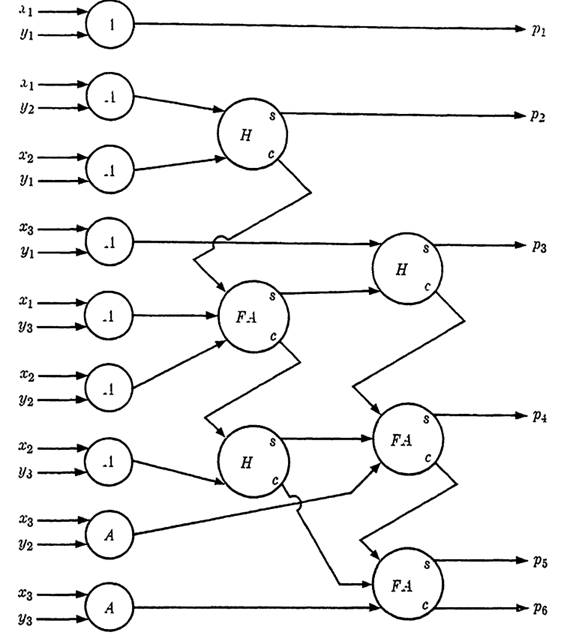

تاريخ الرياضيات

الاعداد و نظريتها

تاريخ التحليل

تار يخ الجبر

الهندسة و التبلوجي


الرياضيات في الحضارات المختلفة

العربية

اليونانية

البابلية

الصينية

المايا

المصرية

الهندية


الرياضيات المتقطعة

المنطق

اسس الرياضيات

فلسفة الرياضيات

مواضيع عامة في المنطق


الجبر

الجبر الخطي

الجبر المجرد

الجبر البولياني

مواضيع عامة في الجبر

الضبابية

نظرية المجموعات

نظرية الزمر

نظرية الحلقات والحقول

نظرية الاعداد

نظرية الفئات

حساب المتجهات

المتتاليات-المتسلسلات

المصفوفات و نظريتها

المثلثات


الهندسة

الهندسة المستوية

الهندسة غير المستوية

مواضيع عامة في الهندسة

التفاضل و التكامل


المعادلات التفاضلية و التكاملية

معادلات تفاضلية

معادلات تكاملية

مواضيع عامة في المعادلات


التحليل

التحليل العددي

التحليل العقدي

التحليل الدالي

مواضيع عامة في التحليل

التحليل الحقيقي

التبلوجيا

نظرية الالعاب

الاحتمالات و الاحصاء

نظرية التحكم

بحوث العمليات

نظرية الكم

الشفرات

الرياضيات التطبيقية

نظريات ومبرهنات


علماء الرياضيات

500AD

500-1499

1000to1499

1500to1599

1600to1649

1650to1699

1700to1749

1750to1779

1780to1799

1800to1819

1820to1829

1830to1839

1840to1849

1850to1859

1860to1864

1865to1869

1870to1874

1875to1879

1880to1884

1885to1889

1890to1894

1895to1899

1900to1904

1905to1909

1910to1914

1915to1919

1920to1924

1925to1929

1930to1939

1940to the present

علماء الرياضيات

الرياضيات في العلوم الاخرى

بحوث و اطاريح جامعية

هل تعلم

طرائق التدريس

الرياضيات العامة

نظرية البيان
CIRCUITS FOR ARITHMETIC COMPUTATION -Binary multiplication
المؤلف:
J. ELDON WHITESITT
المصدر:
BOOLEAN ALGEBRA AND ITS APPLICATIONS
الجزء والصفحة:
150-153
29-12-2016
1574
It has been mentioned in the other sections on arithmetic operations that many other logical circuits are known and used for each of the operations discussed. This situation is even more pronounced with respect to multiplication. Since the process itself is more complicated, it is only reasonable that more variations exist for multiplication. Among the many methods, the most frequently used are those which employ the use of an accumulator in one way or another. The following binary multiplication problem illustrates the steps which must be performed by the computer:

The partial products are easy to obtain since they are each either zero or identical to the multiplicand. However, the addition is complicated because the partial products to be accumulated are not simply 3-digit numbers since each successive partial product is shifted one position to the left of the partial product above it. Besides accumulation, then, it is necessary to include a shifting device capable of reproducing the multiplicand in any desired position. The shifting may be done either upon the partial products or upon the number in the accumulator itself, just as long as the digits are aligned properly before each step in the computation.

FIG. 1-1. Logical circuit for the simultaneous multiplication of two 3-digit numbers.
The preceding discussion has indicated a way in which the problem of multiplication can be, and usually is, approached. However, rather than introduce the shifting circuits necessary for this approach, we will conclude this chapter with a circuit capable of multiplying two 3-digit numbers directly. This circuit (Fig. 1-1) depends only on logical elements already introduced. Although the circuit is by no means trivially self-evident, a careful consideration of the various paths in connection with the sample problem above should convince the student of the validity of the circuit. The half adder is used with the notation introduced earlier and, in addition, adder, is used with identical notation except that FA replaces the letter H found in a half adder. The two elements perform in the same way except that a full adder accepts three inputs instead of two. The notation for this circuit is similar to that of the adder circuit given earlier in that the multiplicand and multiplier are X = x3x2x1 and
Y = y3, y2,y1 respectively. The product is denoted by P = P6P5P4P3P2P1. Note that it is possible for the product to have six, but not more than six, digits.
A complete discussion of circuits involved in arithmetic operations would fill a book larger than this one. It is not our purpose to exhaust the subject but merely to pursue it to the point that the student may appreciate the nature of such problems and the role that Boolean algebra can be expected to play in their solution. While it is true that we are, at this point, very far from the complete design of a computer, the principles and methods which have been presented should have prepared the reader to solve many interesting and worthwhile problems with the use of electrical circuits of one type or another.
 الاكثر قراءة في الجبر البولياني
الاكثر قراءة في الجبر البولياني
 اخر الاخبار
اخر الاخبار
اخبار العتبة العباسية المقدسة

الآخبار الصحية















 قسم الشؤون الفكرية يصدر كتاباً يوثق تاريخ السدانة في العتبة العباسية المقدسة
قسم الشؤون الفكرية يصدر كتاباً يوثق تاريخ السدانة في العتبة العباسية المقدسة "المهمة".. إصدار قصصي يوثّق القصص الفائزة في مسابقة فتوى الدفاع المقدسة للقصة القصيرة
"المهمة".. إصدار قصصي يوثّق القصص الفائزة في مسابقة فتوى الدفاع المقدسة للقصة القصيرة (نوافذ).. إصدار أدبي يوثق القصص الفائزة في مسابقة الإمام العسكري (عليه السلام)
(نوافذ).. إصدار أدبي يوثق القصص الفائزة في مسابقة الإمام العسكري (عليه السلام)


















